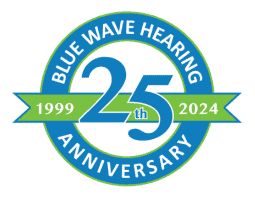- Alcohol and Hearing Health - April 9, 2025
- How Smoking Can Harm Your Ears - March 11, 2025
- Succeeding in the Workplace with Hearing Aids - February 10, 2025
Ear infections and earwax sometimes have the potential to cause a temporary partial or full hearing loss, although this is usually no cause for alarm. This type of hearing loss is known as conductive hearing loss; it’s caused by a blockage in the outer or middle ear that prevents sound from reaching the inner ear, and hearing usually returns to normal once that blockage is removed.
Occasionally, a more serious condition can occur in the inner ear that causes a sudden sensorineural hearing loss (SSHL), or sudden deafness. Tests can usually properly diagnose the difference, but it’s important to act quickly to prevent possible permanent damage from this medical emergency.
- Outer ear infections occur when the ear canal becomes inflamed or infected due to bacteria. Blockage may occur, but hearing usually returns after the infection resolves.
- Middle-ear infections occur when swelling or pus forms in the middle ear, blocking sound from moving to the inner ear. Hearing usually returns after the infection goes away, but untreated middle ear infections can cause damage that leads to permanent hearing loss. Most infections resolve on their own, but antibiotics can help.
- Inner-ear infections usually result in severe vertigo, nausea, and vomiting from an inability to balance, and a loss of hearing in higher-frequency ranges. A virus or bacteria is the usual cause, and recovery can take weeks or months, but most patients make a complete recovery.
- Approximately 4,000 new cases of SSHL occur each year and can affect anyone, but they happen most often to those between the ages of 30 and 60. There are more than 100 possible causes, which makes it difficult to understand the source of the sudden hearing loss. Many medical professionals believe that a viral infection attacks the inner ear and causes SSHL. In viral cases, hearing may completely return, may partially return, or may not return at all.
- SSHL can occur all at once or over a period of up to three days. A loss in hearing sensitivity of at least 30 decibels in three connected frequencies usually indicates a diagnosis of SSHL.
- Nine in 10 people who experience SSHL are affected in only one ear, and many people notice it when they wake up in the morning, or when they try to use the deafened ear and realize it’s not working. Others notice a loud popping sound just before their hearing disappears, and they sometimes experience dizziness, tinnitus, or both.
- A medical specialist should be seen within the first 48 hours of SSHL to help ensure a complete recovery.

